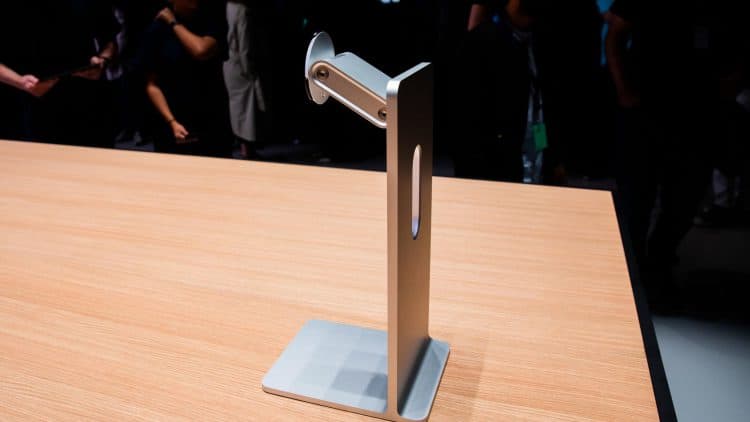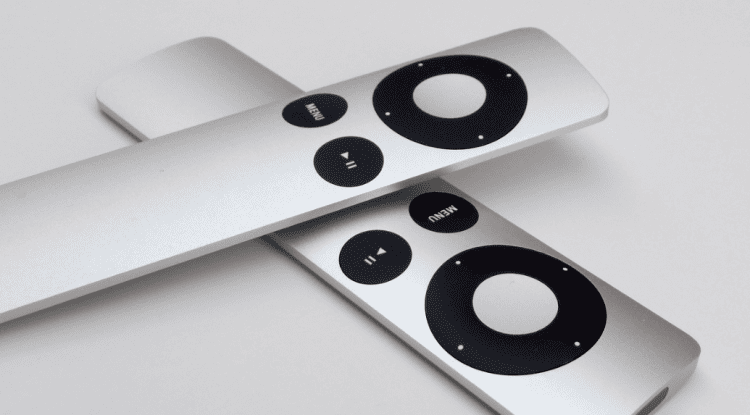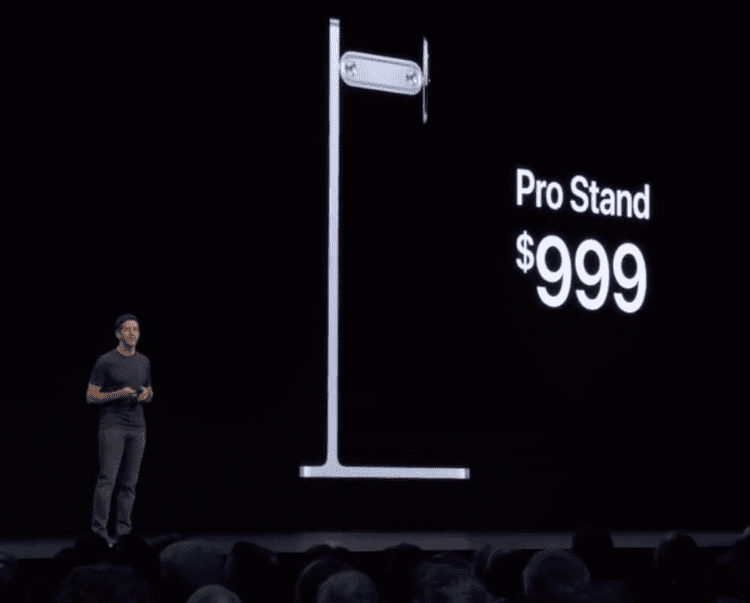Oh, Apple, oh Apple.
Not often do I feel the need to write about this kinda thing, but on a day (WWDC 2019 Keynote) when you managed to confound my expectations in so many positive ways, one of your decisions has left me in a state of bewilderment: that bloody monitor stand. I just don’t get what you’re trying to do.
To sum up, you’ve built an incredible high-end monitor at an astoundingly low price, relatively speaking ($5000, where comparable monitors are $50,000 and up), but you’re selling the stand separately and charging $1000 for it. A grand, for a stand.
And I’d happily buy the monitor and stand together for $6000—even $7000!—but I can’t afford to pay $5000 plus $1000.

It’s a nice enough stand. A little brutal in its design, perhaps, rather sternly jutting up from your desk, but it’s not offensive, and of course—of course—it’s exceptionally engineered. As is typical of you guys, you’ve managed to reduce and polish and encase and ultimately hide an enormous amount of clever goings-on.

It’s going to be delightful to use. But all that clever finger-tip control counterbalancing stuff’s been miniaturised and hidden away: and it’s all behind the screen anyway, so the only people who’ll be able to see and appreciate its beauty are those walking behind the monitor. Which doesn’t happen much in studios. And, honestly, once you’ve positioned a monitor right, you kinda don’t move it much; it just needs to stay there. So it’s going to be delightful to use, once or twice a month perhaps, for a second or two.
You’ve basically given us an expensive solution to a problem everyone else has apparently solved cheaply. But that’s you, isn’t it, Apple… I mean, even the way you design a remote control is a bit nutty.
 [image credit: hifiduino.wordpress.com]
[image credit: hifiduino.wordpress.com]
They’re just an afterthought for most manufacturers, but you came up with a jawdropping “ship in a bottle” approach to hide all the electronics and battery in a seamless sliver of metal. Few people, however, actually notice anything beyond “nice remote. Hmm… what’s on?”, click. Lots of engineering-fu, but completely hidden from sight.
And I love it.
I’m one of those who does notice my phone’s feel as I take it out my pocket. I’ll get distracted now and again while reading, suddenly aware again of the screen’s clarity and proportions and quality, and remembering what phones used to be like, and feeling lucky I’m in an age where this stuff is happening. As much as you’d say you want the hardware to fade away in your hand, leaving just a portal to your task, your friends, the internet – well, I find it hard to stop noticing the hardware miracle itself. I love this stuff, Apple.
So I’m your damn target audience. But I still can’t pay a grand for a monitor stand.
Well—more accurately—I can’t be seen to have paid a grand for a monitor stand.
The Apple deal has always been: you’re paying more, but it’s justifiable. I can justify paying “the Apple Tax” to my clients, my family: my 10 year old Mac Pro is still the centre of my studio. It was difficult to explain to my wife at the time why I was paying so much of our money for a computer, but the economics of it are absolutely clear now.
And that’s what’s so crazy to me: the monitor itself is astoundingly good value; noone could dispute it. But the stand – especially to those who aren’t aware of the engineering feat you’ve so carefully hidden inside it – looks like a profligate purchase. The audience at the Keynote reacted with an intake of breath when they heard the price – they’d already forgotten that it, well, probably was worth it, judging by that x-ray view of cogs and springs and stuff inside it – but all they could think – like me – was “the stand is how much?”
 [sfx: crowd murmuring “whaaa…?”]
[sfx: crowd murmuring “whaaa…?”]
‘Cos you can’t not have a stand. There’ll be the few who buy the VESA mount option instead, and some godawful gas-lift swivel-arm desk-clamp nonsense from Amazon, but most people perceive a monitor stand as a non-optional accessory. And pretty much every manufacturer too. Just like remote controls for TVs.
I mean, that second gen Apple TV (+remote) was $100. But if you’d launched it like this:
… you’d have been ridiculed. Even if that’s how the costs broke down, manufacturing-wise. The box itself would lose perceived value, and by charging for something we’re kinda going to need anyway (I mean, you can control the Apple TV without a remote by using the iPhone app, but it’s not as convenient), things start to feel a bit scammy. A bit nickel-and-dimey.
But that’s what you’ve done with the monitor: as a $6000 bundle, it would have been excellent value. Noone wants to think what proportion of that money is going somewhere other than the pixels – you’re paying $6000 for a glorious window onto your task. In my line of work I can probably at some point justify $6000′ worth of pixels in front of my eyes.
You’ve decided not to offer me that, though, instead telling me I can only have $5000′ worth of pixels, but I have to spend another $1000 anyway.
Perception is everything. And you’ve inexplicably and inextricably tied together two messages here: monitor = professional, stand = status symbol.
I can justify one to my clients, to my wife, but not the other. Oh, Apple. I can’t do it. What were you thinking? Why’d you split the bundle?
 [image credit: u/JakesFriendsBrother, reddit]
[image credit: u/JakesFriendsBrother, reddit]
tldr: I’d have paid you all the moneys if you hadn’t told everyone how it was split between the monitor and the bloody stand
